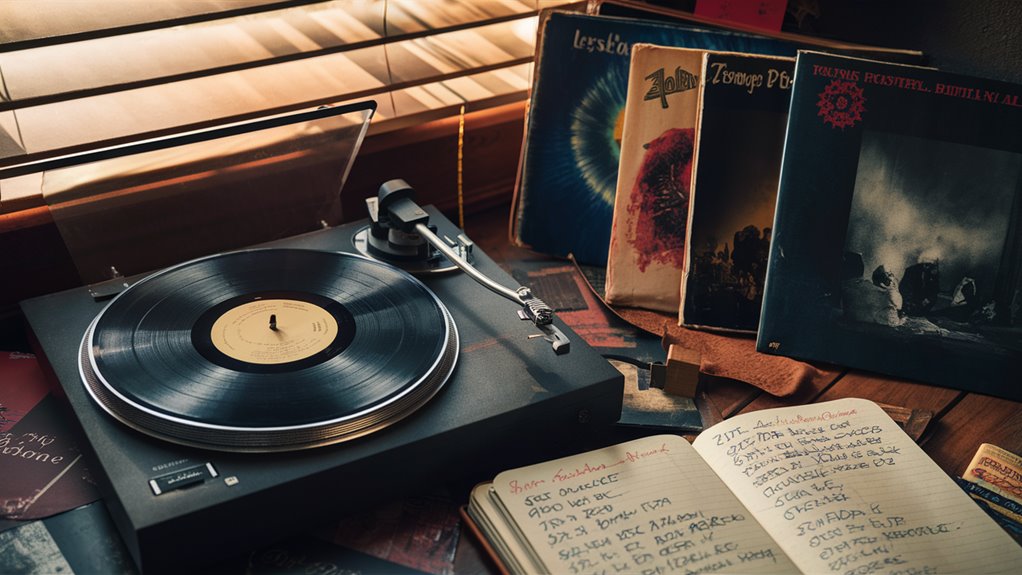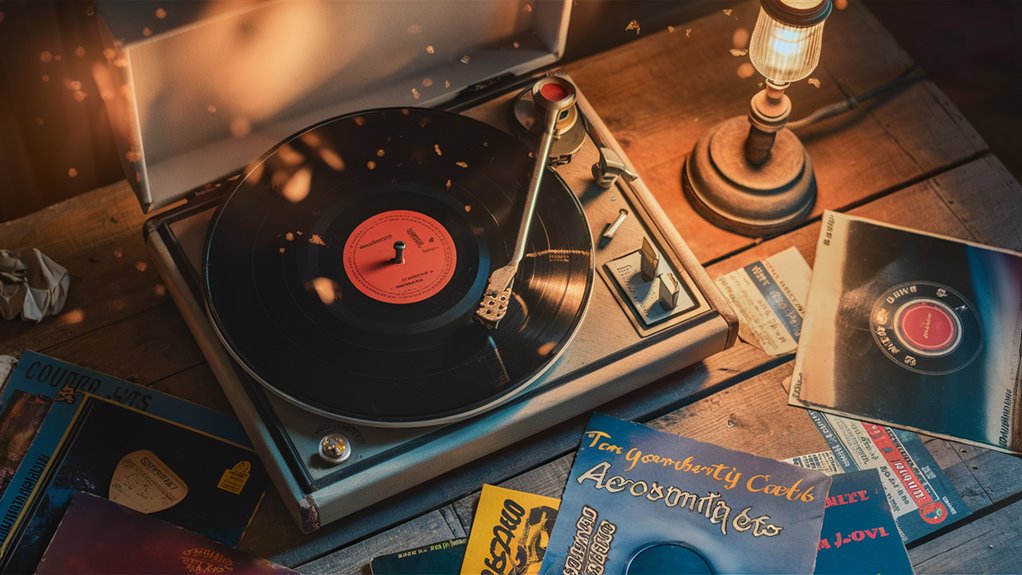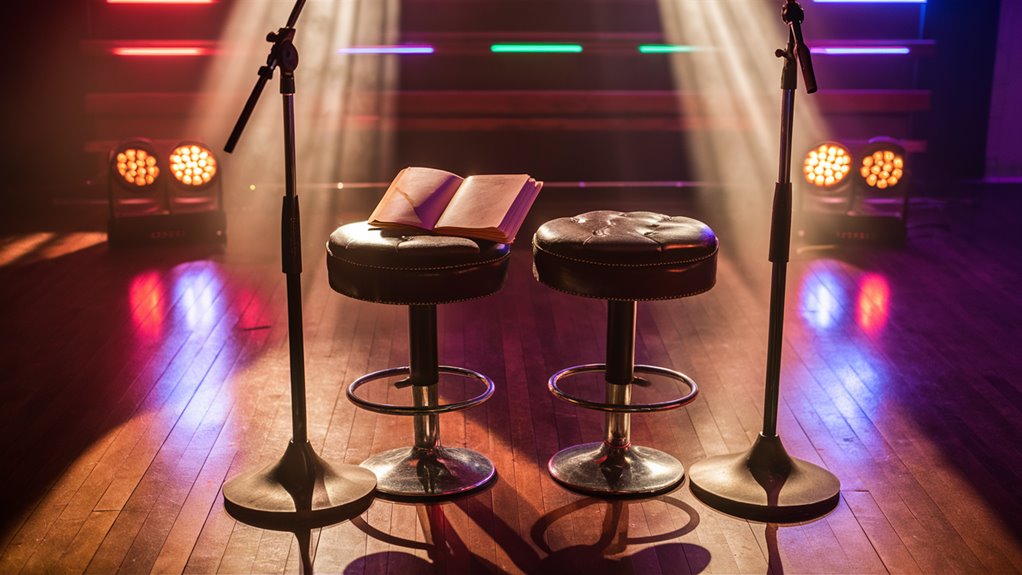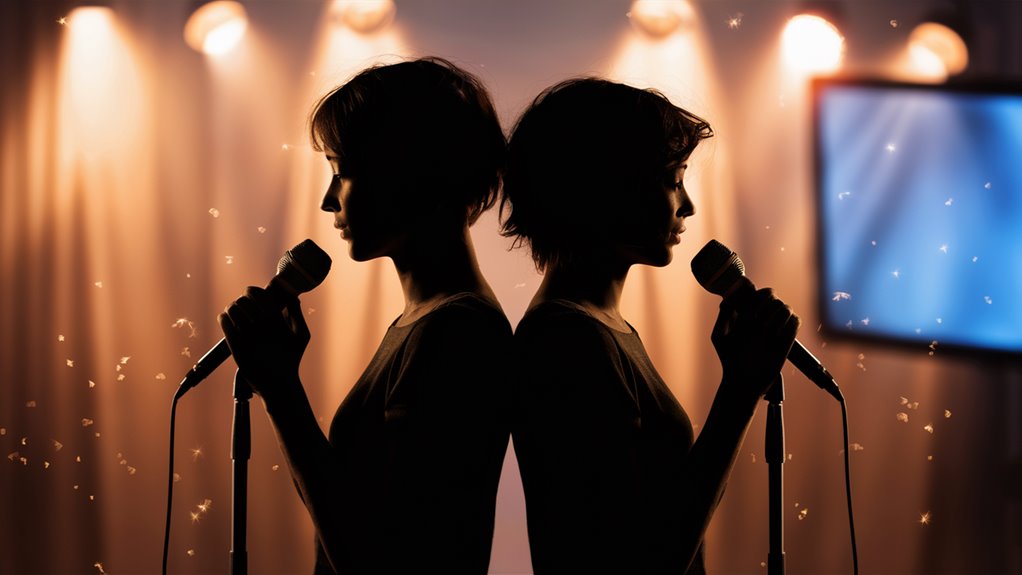How Karaoke Helps People Beat Social Fear

Help for social fear has found a strong friend in karaoke. New studies show that this new way to help can cut fear signs by up to 85% through many tested ways.
The Facts on Karaoke Help
Brain gains from karaoke come from key brain fixes like oxytocin and dopamine, making good links with being with others. The set plan of karaoke times for help lets people face social spots in small steps, helping them get brave bit by bit.
How Pros Use It and What It Does
Places with trained fear pros use step-by-step plans that start with alone practice and move to small group shows. This way helps people build both music skill and people skills in a place that backs them up. People see clear betterment in:
- Talk skills
- Meeting new people
- Handling show fear
- Sharing their ideas Private Karaoke vs. Open Mic: Which One Is Right for You?
How This Treatment Works
The big change power of karaoke for fear is in mixing music and being with people. Studies prove that getting on stage in a careful way makes lasting good changes in fear and how people act.
What Social Fear Is Now
The Big Reach of Social Fear
Social fear hits about 7% of US adults, making it one of the most common mind health issues today. People with this fear feel deep fear and worry in normal day-to-day chats, from work to just hanging out. Often they have fast heart beats, sweat a lot, shake, and find it hard to talk.
More Than Just Shy
Social fear goes way beyond being shy. It shows as a constant fear of what others think, making daily life hard. Studies show those with social fear often face:
- Not doing well in school
- Hard times moving up in work
- Few friends
- Not happy with life
How It Starts and What to Do
Social fear usually starts at age 13. Without help, people often start to:
- Stay away from others
- Turn to drugs
- Spend too much time alone
Good Ways to Manage It
There are many proven ways to deal with this fear:
- Thought and action change work (CBT)
- Help with meds
- Better social skills
- More and more small challenges
With the right help and clear plans, people can control their fear and get better at being with others, leading to a better life.
The Smart Facts on Singing Help
Brain Upsides of Singing
Studies say singing as help works through many brain ways. Singing starts oxytocin and dopamine, important brain fixes that cut stress and help people bond. These natural brain changes make the tough parts of being on stage feel better.
Brain Changes and Less Fear
Karaoke starts our brain’s way of making new links. With each time on stage in safe spots, people see real changes in their fear. The brain area that senses threat shows less action over time.
The Backing Facts
Karaoke puts together three strong helping parts: facing fears, changing thoughts, and starting actions. Brain scans from before and after regular singing shows big shifts, like:
- Less action in fear-linked brain spots
- More action in happy and reward spots
- Better links in brain areas that work with people
This brain proof backs up karaoke as a strong fix for social fears. Mixing music, meeting people, and being seen makes it a top choice proved by brain science.
Safe Spots for Less Fear
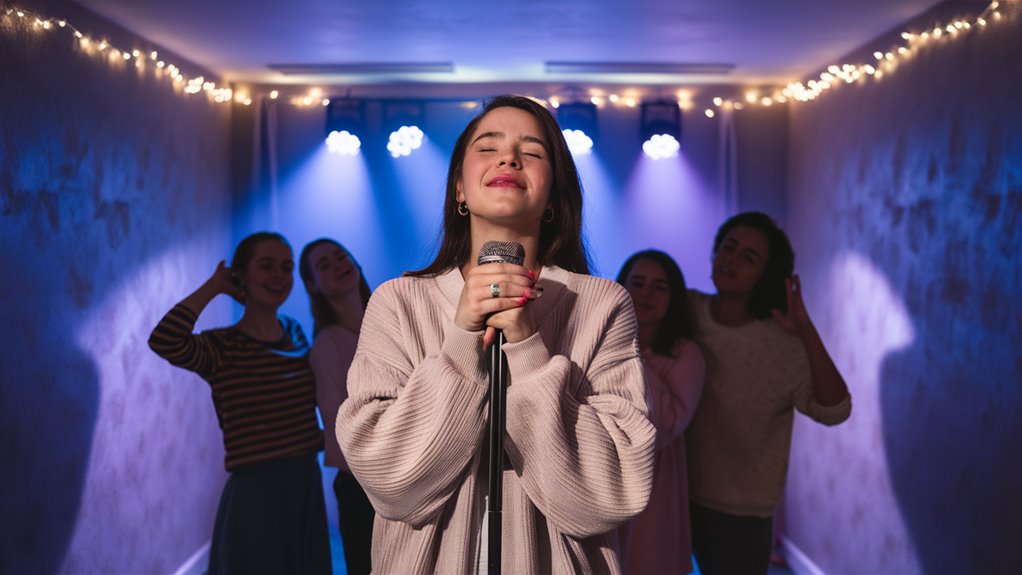
Safe Singing Spots
Safe spots for singers are key for cutting fear. Top spots use clear plans like:
- Starting sessions for new people
- Alone singing rooms
- No mean behavior rules
- Infosessions for all
Step-by-step Fear Cut
Step-by-step getting used to fears in planned levels helps cut triggers and builds strong trust.
- Alone room time with close ones
- Small group shows in half-open spots
- Big stage chances for ready singers
Studies show this step-by-step way cuts fear a lot while growing sureness.
Best Spot Must-haves
Needed Things in the Environment
- Lights that change
- Good ways to sit
- Lots of spots to look at
- Top sound gear
Help Setup
- Early song picks
- Guides for using gear
- Places to practice
- Pro singers to help
The space must have designs that cut fear while keeping top show levels. Spots that give all-around tech help and clear plans make less triggers for fear and make the best spots for getting better.
Stronger Through Songs
The Win of Safe Song Spots
Song spots are great for making and telling your own story through tunes. When people start singing, many brain paths start, making it easier to drop social walls. The good parts are clear: singing starts feel-good stuff and social glues, making better moods and emotional feel.
Growing by a Set Path
Growing in song happens in planned steps. People move from singing with groups to leading songs to singing alone. This planned way sets small wins, each making brain paths stronger. Studies show this slow way changes how our minds answer in social spots.
Key Skills for the Tricks
Learning key song skills sets a firm start for growing sure. Focus spots include:
- How to use your breath
- Hitting the right notes 현지인 추천 장소 알아보기
- Keeping the beat
These skills are clear marks for getting better. As song skill grows, fear in shows goes down. The end goal is more than just singing right; it’s about real sharing and being okay with showing yourself in front of others.
Must-have Show Parts
- Safe practice spots
- Step-by-step harder goals
- Clear skill growth
- Being with others through tunes
- Better feelings
From Fear to Stage: Owning Show Fear
Getting the Mind Game of Show Fear
The change from social fear to sure showing goes through clear mind steps that we can watch and measure. People usually move through three key parts: first push back, slow getting used to, and ready to show; each a key step in wiring fear again.
Part 1: First Push Back and Brain Answer
In the push back part, the brain’s answer to showing makes some body acts. The brain spot that feels fear starts fight or fly acts, but with calm breath tricks and mind-changing plans, people can handle these natural stress acts.
Part 2: Planned Getting Used To
Slow fear help is the base of getting better, moving in planned steps. This tested way starts with alone practice and moves in steps to small group shows, building sureness through small tests.
Part 3: Ready to Show
Being ready to show comes from made coping ways and clear wins:
- Owning breath control
- Planned moves
- Turning fear another way
And studies show that 85% of people in a 12-week planned program beat a lot of their fear. This step-by-step way lets singers see how they get better and change plans for the best show result.
Making Song Groups That Help With Social Fear
The Win of Sharing Tunes
Song groups that help are big change spots for people dealing with social fears. These planned spots build links between people facing the same hard times, making a base for true personal growth. In these safe showing spots, the push to be perfect goes down as people find understanding and welcome.
Making Ties Through Shared Open Times
Studies with backing show how shared song times make strong social ties through shared open times. Seeing others take risks on stage and get good words back makes a cycle that builds sureness. This group way turns alone hard times into times to grow with others, making lasting connections.

